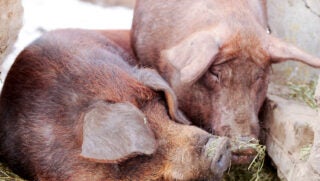It’s been a common criticism among many of today’s farmers and agricultural advocates that labels on food items bend the truth in excessive ways — like promoting non-GMO strawberries when there are no GMO strawberries available or using the Non-GMO Project-verified logo on Himalayan Rock Pink Salt (any salt, since it’s not alive, can not be genetically modified). Now a group of organic farmers feels that the National Organic Program standards are watered down and have instead formed the Real Organic Project.
The new group isn’t necessarily wrong about the NOP. Many consumers have no idea what the current label means, what it stands for, or what the impact could be on the ag industry if it became overly diluted. The Real Organic Project, a nonprofit that wants to promote the practices of traditional organic farming, criticizes the NOP for things such as certifying hydroponics and Concentrated Animal Feeding Operations as organic. In the wake of announcements about another group creating a Regenerative Organic Label, the Real Organic Project has announced that it, too, is creating it’s own label.
Yeah, that’s a lot of labels and nuances to keep track of in the future.
The concern among farmers and retailers, of course, is that if people currently don’t fully grasp what National Organic Program labeling is all about, what does it mean to parse that production philosophy into two or three different niches?
The Real Organic Project says its hope is to reclaim transparency when identifying organic products to farmers and eaters.
“Organic farming must be based on healthy soil, with plants and animals as an integral part of that soil ecosystem,” said Dave Chapman, executive director of the Real Organic Project. “The only radical thing about our new standards is that they have been rejected by the USDA. They are a return to the fundamental beliefs of organic farming.”
Here’s what the Real Organic Project wants to improve upon and what it takes issue with in the current standards:
- Origin of Livestock. In current NOP rules, producers can continuously transition dairy animals into organic over time. This standard ends that.
- Grazing Requirement. There is strong evidence that current NOP grazing requirements are not being met. This standard tightens the current standard, and it will be enforced.
- Grown in the Ground. Current NOP decisions permit 100 percent hydroponic production with no relationship between the soil and plants. This standard mirrors the recently passed EU standard that requires crops to be grown in the soil, in contact with the subsoil, in contact with the bedrock.
- Soil Management. Current NOP language requires certified farms to maintain and improve the fertility of the soil, but these standards are often not being met. This standard simply reinforces the language and intention of OFPA and the NOP language.
- Greenhouse Production. NOP standards around greenhouse production have never been set. This standard prohibits the use of 100 percent artificial lighting and requires an energy plant to show steady progress in reducing the carbon footprint.
- Animal Welfare. Following the recent rejection of the Organic Livestock and Poultry Production recommendation for improved animal welfare, CAFO production of poultry has become accepted in NOP certification. This standard requires genuine outdoor access for all animals.
- Split Farms. This standard limits the circumstances in which an organic farm can produce non-certified crops.
The Real Organic Project will be managing a pilot program this year to certify a limited number of farms. This pilot program will test the certification process in preparation for the label going public in 2019.


